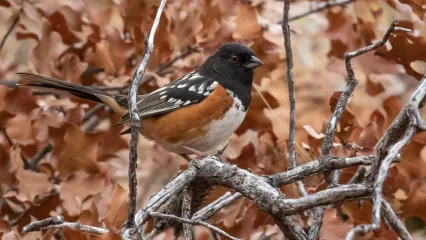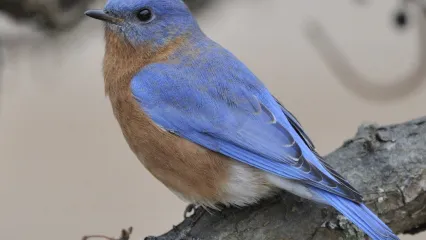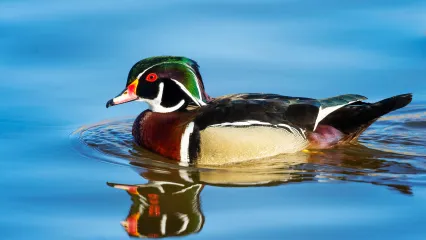
Description
This medium-sized songbird is a little smaller than a robin. The head and neck are black (males) or brown (females) and resemble a hood. The bill is thick and cone-shaped. The eyes are red – an unusual color among sparrow-like birds. The wings are black (males) or brown (females) with many white spots from which it gets its common name. The tail is long and dark with white outer edges. The belly is a contrasting white, while the sides are rusty-orange. Spotted towhees are easily confused with the eastern towhee. This is not surprising given that, until recently, the two were considered races of the same species (and were previously known as rufous-sided towhees). Unlike the eastern towhee, the spotted has numerous white spots on the wings. Otherwise the two species are similar in appearance and behavior.
Size
Approximately 6.7-8.3 inches long. Wingspan of 11 inches.
Habitat
Towhees are normally found in thickets, shrublands, scrub oak and second-growth forest. They are uncommon in residential neighborhoods, but may be found in areas with dense shrub cover. Spotted towhees are found across the western three-quarters of the state.
Life Cycle
At feeders, eastern towhees feed on black-oil sunflower seeds, millet and milo placed on the ground or on low platform feeders. Away from feeders, the eat a wide variety of seeds and ground-dwelling insects.
How To Observe
Towhees are usually found alone or in small flocks of less than eight birds. They feed on the ground, usually under the cover of trees and shrubs. They kick and scratch the ground and fallen leaves searching for insects and seeds. At feeders, they prefer to feed on seeds that have been scattered over the ground or placed on a low platform feeder near dense cover.

